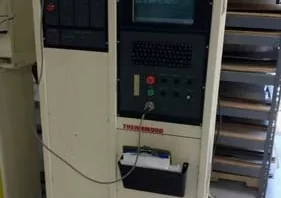Intelligent fixture design plays a crucial role in enhancing precision and efficiency in five-axis CNC machining. This research focuses on exploring methods to improve the precision and efficiency of CNC machining through intelligent fixture design. By utilizing advanced technologies and innovative techniques, it is possible to optimize the machining process, minimize errors, and reduce production time. This article will discuss various aspects of intelligent fixture design on five-axis CNC machining and its impact on precision and efficiency improvement.
1. Importance of Intelligent Fixture Design
Intelligent fixture design is essential for achieving high precision and efficiency in five-axis CNC machining. A well-designed fixture ensures the stability and accuracy of the workpiece during the machining process. It minimizes vibrations, deflections, and errors caused by clamping forces. Additionally, an intelligent fixture allows for quick and easy setup, reducing downtime and improving overall productivity.
2. Integration of Sensors and Controls
Integrating sensors and controls into the fixture design can greatly enhance precision and efficiency. By monitoring key parameters such as temperature, pressure, and position, the fixture can adapt and adjust accordingly during the machining process. For example, sensors can detect any deviations from the desired position and signal the machining center to make necessary adjustments in real-time. This ensures that the workpiece remains in optimal position throughout the entire process, resulting in higher precision and reduced errors.
3. Adaptive Fixtures for Complex Geometries
Complex geometries pose challenges in terms of fixture design. Traditional fixtures may not adequately support intricate shapes or irregular surfaces, leading to reduced precision and efficiency. However, adaptive fixtures offer a solution to this problem. These fixtures are designed with flexible or adjustable components that conform to the shape of the workpiece. By adapting to the geometry of the part, adaptive fixtures provide better support, minimizing vibrations and improving the overall machining accuracy.
4. Optimization through Simulation
Simulation plays a vital role in the intelligent fixture design process. By simulating the machining operation before actual production, potential issues and inefficiencies can be identified and resolved beforehand. This allows for iterative adjustments to the fixture design, optimizing it for maximum precision and efficiency. Additionally, simulation enables virtual testing of different machining scenarios, reducing the risk of errors or damage to the workpiece during the actual production process.
5. Collaborative Robotics in Fixture Design
Collaborative robots, also known as cobots, are increasingly being integrated into fixture design for five-axis CNC machining. These robots can work alongside human operators, assisting with repetitive tasks and complex operations. In fixture design, cobots can automate certain processes, such as clamping or adjusting components, improving efficiency and reducing the risk of human error. The combination of human expertise and robotic precision results in enhanced fixture design for optimal precision and increased productivity.
In conclusion, intelligent fixture design plays a critical role in improving precision and efficiency in five-axis CNC machining. By integrating sensors and controls, using adaptive fixtures, optimizing through simulation, and leveraging collaborative robotics, the precision and efficiency of the machining process can be significantly enhanced. Intelligent fixture design not only ensures stable and accurate workpiece positioning but also reduces downtime and production errors. As technology continues to advance, further innovations in fixture design are expected, ultimately leading to even higher levels of precision and efficiency in five-axis CNC machining.
.webp)

